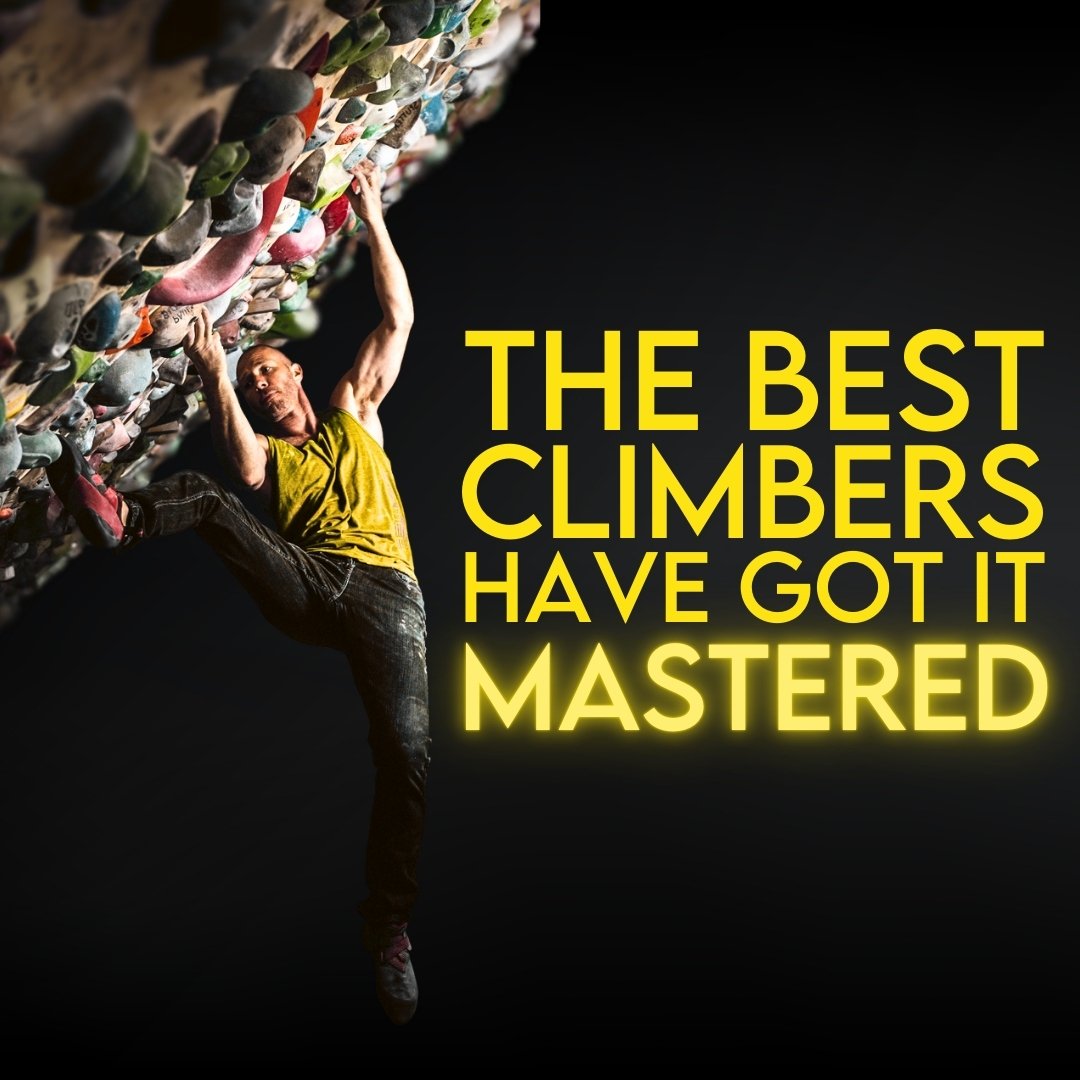Taped Tips | The Secret to Hard Moves that Most Climbers Are Missing
For most of us, climbing looks like this:
Pull on, try the move, fall off.
Stare at your hands and try to understand why you fell.
Pull on, try the move, fall off.
Stare at your hands and come up with a new reason why you fell.
Pull on again, try the move again, fall off. Again.
You get it. You’ve been there.
There’s a better way.
There’s an obvious thing that most climbers are missing when it comes to difficult moves, and several strategies that can help you do those harder moves, harder boulders, and harder routes faster.
Most climbers initially learn to see a climb in a linear fashion. We start from the bottom and go to the top – it just makes sense. But when we approach harder things, it’s advantageous to switch that up. We know that when working on routes or boulders, it’s important to do links through the top starting somewhere in the middle, and then eventually link the whole thing together once you learn all of the pieces.
Thing is, we can do this for individual moves as well.
See, we spend a ton of time doing the bottom half of a move. Learning the start position, the initial trajectory and tension required, and all of this micro beta that makes the start easier – whether it’s exactly how to hold the starting grips, or exactly how to stand on that tiny foot in order to create tension, or whatever. But many climbers never learn the end of the hardest moves. We just hope to get lucky and stick it and send.
And maybe we do get lucky once in a while. But I want to do more climbs, and I want to do them faster, so I’m not banking on luck.
Instead, it’s a smart tactic to learn the end of a difficult move at the same time as you’re learning the beginning.
Here’s how you can do that. The first and simplest thing to do:
Get into the finishing position.
I don’t mean the next stance, but the actual finishing position, even if it’s strange or hard to hold. And don’t just pull on and hold it. Try to understand it, explore it, move out of it. See what happens if a foot cuts, or if both feet cut. Is it necessary to get them back on or is it better to move them to the next holds? Seems obvious that you should just move them to the next foot holds, right? Well, if you’re that person, then this is a step you can’t skip, because that isn’t always going to be the answer. Don’t shortcut this. Go through these steps. We have to be sure not to miss any of the subtleties of the transition between this hard move and whatever the next move is.
But that still leaves the actual path through the air that we still don’t know. So the next simplest thing to do (indoors anyway; this tactic doesn’t really work outdoors most of the time):
Use an intermediate hold that’s near the path of your movement and try to do the finish half of the move from there.
For the hardest moves, I’ll often start close to the target hold and then, over the course of a few attempts, back my way down on holds that are closer to my starting position. If you’re on a spray wall or board, you’ll have quite a few options. I suggest that you also use some holds slightly to either side of what you think the “correct” path is as well. This way, if you’ve got the trajectory slightly wrong, you can still reel it in because you’ve sort of bracketed the path.
Using this tactic is going to do a few things for you: You’ll learn the sensation of catching the target hold. You’ll learn to commit to it and what that feels like. You’ll also learn the tension required, and what happens when you land it. Maybe you barndoor harder than expected, or maybe your feet are dangerously close to coming off and you need to have that plan b in place in case they do. Or you learn exactly how much you need to stomp the feet so that they stay on. Regardless, better to learn it this way than to spend the energy doing the first half of the move over and over.
Like I said though, that often doesn’t work outdoors because you’re already going to the only available hold. There are a couple of things you can do out there (or indoors as well) to help:
On boulders, the power spot is indispensable.
All this means is that you have your spotter help you through the move as much as needed. I was a gymnastics coach, and we power spotted our athletes nearly anytime they were learning a new skill, to help them get a little more height or to spin a little faster or just to keep their head off the ground. The spotter can take a lot of the weight or do a lot of the work, and then over the course of a few attempts, gradually back off of what they’re doing.
Bonus Tip: It’s easy to get attached to the power spot and think you need it. If you’re the spotter, and you suspect that the climber is basically doing the move themselves but they still want your spot, you can start with a hand on them and then as they go, just let them do it. That’s worked more times than I can count.
Power spotting well will take some practice. Sometimes you’ll need the power spot around the lower back. Sometimes at the shoulders. Depends on several factors, including which parts of the body are actually moving and what’s falling away from the wall. And of course, don’t just power spot someone without asking, and even then, communicate about how much the climber wants you to do.
If you’re on a sport route, you obviously can’t get a power spot, but there’s a simple work around: get yourself clipped up so that you’re effectively on toprope for the move, and your belayer can give a little help by pulling harder on the rope instead of leaving it slack. How well this works will depend on the angle the rope is pulling, but it’s worth a try.
My last suggestion works wherever you are – indoors, outdoors, boulders, and sport climbs – and despite it being incredibly effective, I can count on one hand the number of times I’ve seen it employed.
Try downclimbing the move. Notice I said “try.”
Most of the time, if the move is this hard, you aren’t going to be able to downclimb it. That’s fine; you’ve been practicing the first half of the move already, so we don’t need to actually DO the downclimb. You’re only looking for the finishing half here, or the starting half of the downclimb. As you let go to begin down climbing the move, you’ll have to create tension so that you have some control. This is the same tension you’ll want when sticking the move. Indoors you can always stop at one of the intermediate holds. Like I said, we only need that initial bit.
We know that spending time on a finishing link is smart tactics for hard climbs. So why not apply that same concept to individual moves?
It’s the best way to dial into the position, tension, trajectory and commitment required for the hardest moves.
EXPLORE FURTHER
You might enjoy these related articles, episodes, and other resources:
Our Movement Practice Resource Page
SUPPORT + CONNECT
Help us keep the show sponsor-free when you join our Patreon Community for as little as $3.
Get two or more bonus episodes every month on Patreon, Spotify, or Apple.
Subscribe to THE CURRENT and get a monthly exploration of how we can all become better climbers.
Find Power Company on Instagram and YouTube.
Share this episode with a friend who needs to hear it.
LISTEN ON YOUR PODCAST APP OF CHOICE
We’re a proud founding member of the Plug Tone Audio Collective, a group of the best, most impactful podcasts in the outdoor industry.


























A better way to view grades and progression?